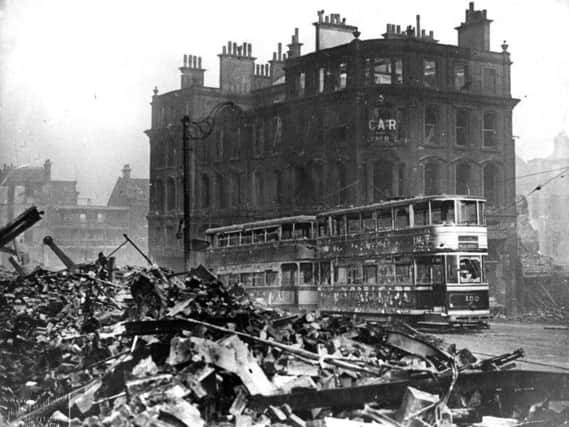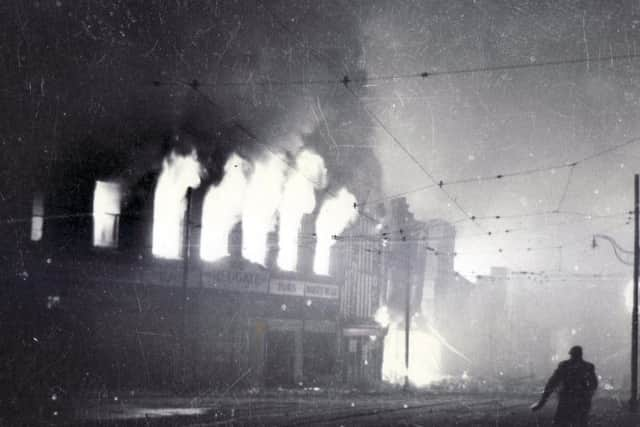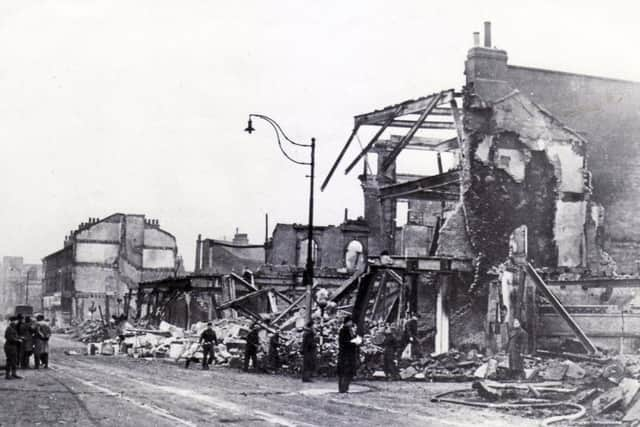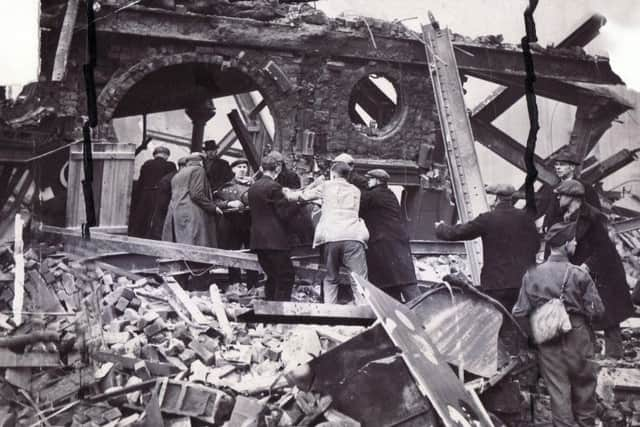Date set for the arrival of Sheffield's Blitz memorial trail


Supported by The Star and backed with more than £80,000 from the Heritage Lottery Fund, the guided walk will take people on a tour of 12 of the most important Blitz sites around the city centre, from the spot where the original Marples Hotel stood in Fitzalan Square to the City Hall, which still bears shrapnel scars.
The first phase of the trail - to consist of high-quality commemorative plaques - will be opened in December, coinciding with the 78th anniversary of the attacks.


Advertisement
Hide AdAdvertisement
Hide AdThe Luftwaffe raids, mounted in 1940 at the height of the Second World War, killed and wounded over 2,000 people, and made nearly a tenth of the city's population homeless. Much of the city centre was flattened and tens of thousands of properties were damaged.
Names of victims will be included in the trail, as well as in a book about the bombings that will be given away in autumn with copies of The Star. The publication is two years in the making and features eyewitness accounts and newly-discovered photos.
The new activity follows the opening of Sheffield's first permanent exhibition remembering the attacks. The displays have been installed inside the National Emergency Services Museum at West Bar, and have doubled the number of visitors to the venue in the 16 months since they were launched.
Author Neil Anderson began campaigning for the guided walk eight years ago, following the release of his book Sheffield's Date With Hitler. He thought the city was not doing enough to commemorate the Blitz, and teamed up with project manager Richard Godley and heritage interpreter Bill Bevan to submit the successful Heritage Lottery Fund bid, which brought in £81,300.


Advertisement
Hide AdAdvertisement
Hide Ad“It was truly humbling to help unveil the exhibition after so many years of hard work and perseverance," said Neil. "I’m now looking forward to the most of exciting phase of the project taking shape.”
Further donations towards the Sheffield Blitz 75th project came from Peter Stringfellow and Terry Deary - the creator of Horrible Histories - along with The Moor, Atkinsons and scores of individuals.
It also has the backing of Sheffield Council, Sheffield College, Sheffield 50 Plus, Museums Sheffield and South Yorkshire Aircraft Museum.
The seven-storey Marples Hotel was completely destroyed on December 12, 1940,. Seventy people died when the explosives hit and some bodies were never recovered from the rubble - its inclusion on the route means the site will finally get a memorial befitting a war grave.


Advertisement
Hide AdAdvertisement
Hide AdThe Moor was devastated - one witness described the street as looking like a 'tunnel of fire' - and every building on Angel Street was razed to the ground. Remarkably the Town Hall was largely unscathed, except for its windows being blown in.
Codenamed 'Crucible' by the Germans, the mission was prompted by the Nazi regime's knowledge that Sheffield's steelworks played a major role in Britain's war effort, making crankshafts for Spitfire and Hurricane aircraft in addition to components for tanks, warships and guns. Consequently, the raids' targets were the East End factories - but in reality, worst affected was the city centre and suburbs such as Sharrow, Nether Edge, Heeley, Broomhill and Woodseats.It is hoped the plaques will become a driver for tourism, forming part of the street furniture of Sheffield for generations. In 2015 a delegation of German military were the first people to walk the route.
Visit https://sheffieldblitz.wordpress.com or follow @SheffieldBlitz75th for details.